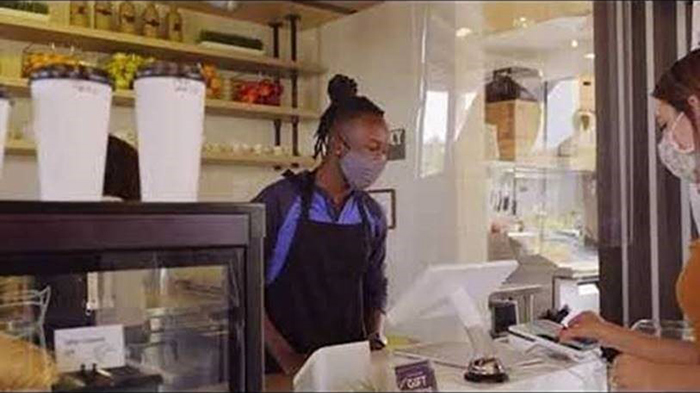
On Sept. 9, President Biden announced that OSHA will begin working on a second Emergency Temporary Standard to ensure that as many workers as possible can get vaccinated.

On Sept. 9, President Biden announced that OSHA will begin working on a second Emergency Temporary Standard to ensure that as many workers as possible can get vaccinated.
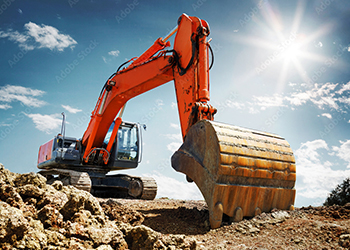
National Safe Digging Day reinforced the need to call 8-1-1 before beginning excavation projects to prevent injuries and avoid damage to underground pipes and electrical lines.
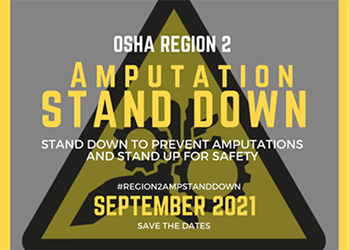
During September, employers and workers in New Jersey, New York, Puerto Rico, and the U.S. Virgin Islands are participating in a month-long series of virtual events to prevent workplace amputations. Registration is free.
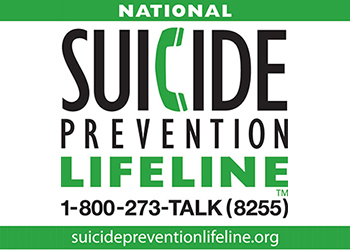
Safety stand-downs will be held during Suicide Prevention Week, Sept. 6-10, to combat a surge in construction worker suicides.
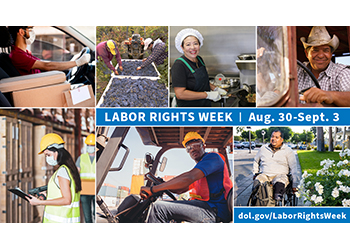
Across the country, events are being held to emphasize the rights of all workers in the U.S., regardless of their immigration status, to a safe and healthful workplace and full payment of wages earned. To learn more, visit the Labor Rights Week website.
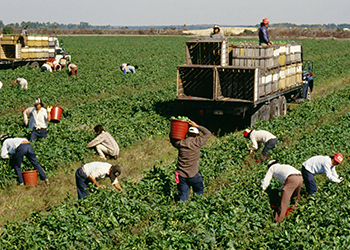
Sept. 19-25 is National Farm Safety and Health Week. We have resources to help protect workers from agricultural hazards such as tractor rollovers, grain engulfment, pesticide exposure, and heat illness.
The U.S. Food and Drug Administration approved the first COVID-19 vaccine. The vaccine has been known as the Pfizer-BioNTech COVID-19 Vaccine, and will now be marketed as Comirnaty (koe-mir’-na-tee), for the prevention of COVID-19 disease in individuals 16 years of age and older. The vaccine also continues to be available under emergency use authorization (EUA), including for individuals 12 through 15 years of age and for the administration of a third dose in certain immunocompromised individuals.
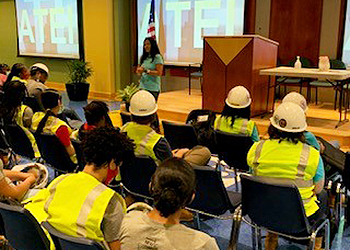
Last month OSHA met with women in the construction industry to discuss their workplace safety and job opportunities.

A new OSHA initiative seeks to protect workers in the tank cleaning industry from atmospheric and confined space hazards.
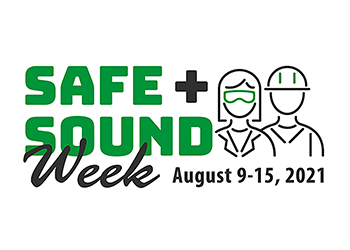
Thank you for participating in this year's Safe + Sound Week! Download our certificate of recognition for your efforts to promote workplace safety and health programs.
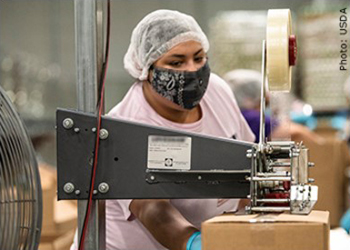
OSHA issued updated guidance on August 13 to prevent the spread of the coronavirus in all workplaces.
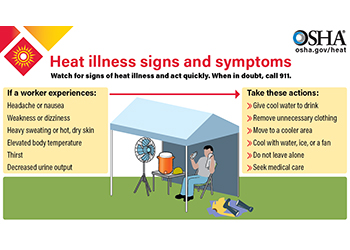
OSHA has new infographics (in English and Spanish) on how to recognize the signs and symptoms of heat illness and what to do to treat them.
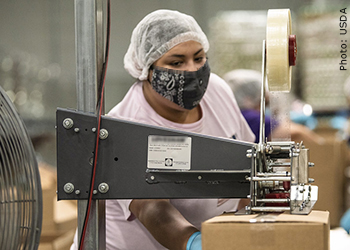
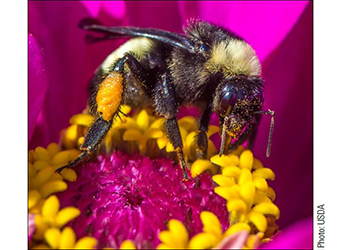
A new fact sheet helps to protect outdoor workers from allergic reactions to insects.

OSHA has new public service announcements and infographics (in English and Spanish) to help get the word out on keeping workers safe in the heat.
The Center for Public Health Workforce Development is celebrating Safe & Sound week by offering the OSHA 7300: Understanding OSHA’s Permit-Required Confined Space Standard course on August 10, 2021. There is no registration fee to attend this course.
Finding and fixing hazards is a core element of a workplace safety and health program. A systematic find and fix approach is an ongoing process that helps better identify and control sources of potential injuries and illnesses. This includes establishing procedures to collect and review information about known or potential hazards in the workplace, investigating the root cause of those hazards, and prioritizing hazard controls.
Learn how to keep workers safe by finding and fixing hazards in your workplace. Take the Check on Safety Challenge! Complete the items on the checklist, earn your challenge coin, then share the results in your workplace or on social media using #SafeAndSoundAtWork and #CheckOnSafety.

Implementing a complete safety and health program takes time. OSHA’s 10 Ways to Get Your Program Started Graphics provide simple steps you can take to get your workplace safety and health program started, and to move your business forward to prevent injuries and illnesses. Download the images and share them on social media using #SafeAndSoundAtWork.
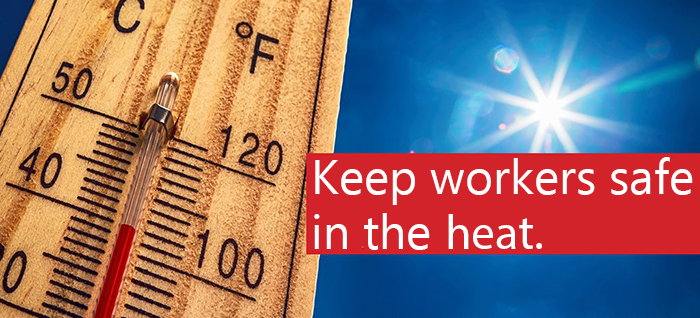
Employers should create plans to protect both indoor and outdoor workers from developing heat-related illnesses. OSHA has resources to help keep workers safe.
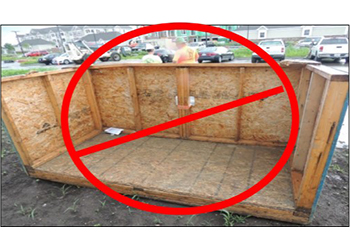
A new bulletin provides instruction on how to safely construct and secure job-made boxes for lifting workers and materials.
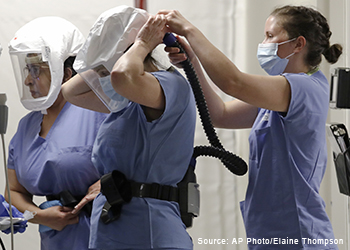
OSHA has issued an emergency temporary standard that requires employers to help protect healthcare workers in settings where suspected or confirmed COVID-19 patients are treated.
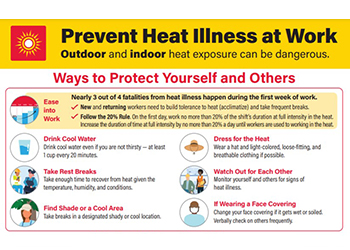
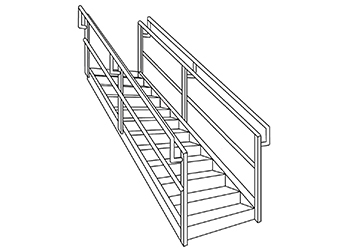
OSHA is updating the handrail and stair rail system requirements for its Walking-Working Surfaces standard.
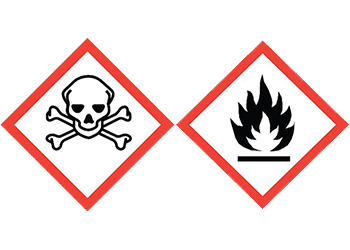
An online hearing to discuss updates to OSHA's Hazard Communication Standard will be held on Sept. 21.
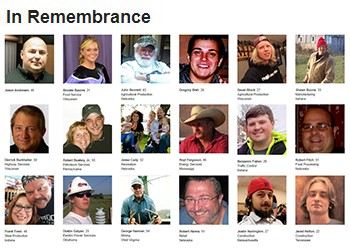
OSHA commemorated Workers Memorial Day with a virtual program and new webpage that pays tribute to workers who lost their lives on the job.

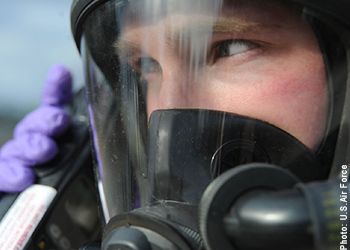
A new pamphlet provides information on personal protective equipment for emergency response and recovery workers.
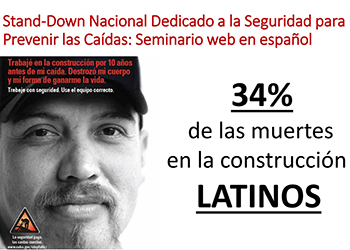
A Spanish-language webinar was held as part of the National Safety-Stand-Down to Prevent Falls. A video of the webinar and the slide presentation are available online.
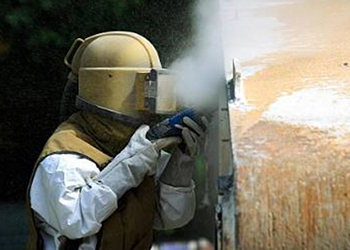
OSHA has new resources to help protect workers from occupational exposure to beryllium.

Resources for this week’s National Safety Stand-Down to Prevent Falls include a Spanish-language webinar and public service announcement.

April 28 is the 50th anniversary of OSHA beginning its mission to protect the safety and health of America’s workers. Stay tuned for details on upcoming events.

April 28 is Workers’ Memorial Day. Events will be held across the country to honor those who lost their lives on the job.

April is Distracted Driving Awareness Month. The National Safety Council has resources to keep workers safe on the road.

Learning how to properly fit fall arrest harnesses will be the focus of an April event to support the National Safety Stand-Down to Prevent Falls.
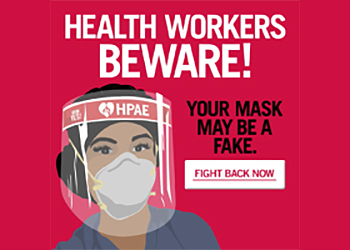
Counterfeit 3M respirators are being distributed in healthcare facilities. The Health Professionals and Allied Employees union has created a guide to identify fake masks.

OSHA launched a national emphasis program to protect high-risk workers from COVID-19 hazards. The program also prioritizes employers that retaliate against workers who complain about unsafe or unhealthful conditions.
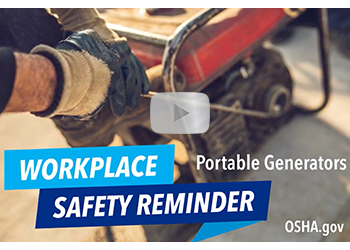
OSHA issues audio message on portable generator safety during a power outage.

Safe + Sound Week will be held August 9-15 to recognize the successes of workplace safety and health programs.
SARS-CoV-2 has led to the worldwide disruption of businesses and lives. Identifying infectious agents at work sites and effectively protecting workers is essential for business continuity. This one-day course outlines employer responsibilities to safeguard workers from hazards associated with COVID-19. Participants will apply safety and health management programs to identify and control infectious diseases.
Register Online or download the PDF for more information.
April 19 to April 23, 2021
This week-long workshop provides corporate managers, executives, and safety professionals essential tools to develop a safe work environment for their employees.
These five (5) courses are offered by the Atlantic OSHA Training Center. They provide practical instruction in safety concepts that today’s professional manager needs. Topics covered include safety awareness, effective record keeping (required by OSHA), elements of an emergency evacuation plan, tools to evaluate accidents and near misses, and effective management tools.
Continual changes in regulation as well as regulatory enforcement makes
this week-long program a vital link to workplace safety.
Training will be led by John Malool, MS.
Click for more information and to register

OSHA issues stronger worker safety guidance to help employers and workers identify risks of COVID-19 exposure and contraction, and implement a COVID-19 Prevention Program.
OSHA issued new public service announcements in English and Spanish to help prevent the spread of the coronavirus in the workplace and keep workers safe.
